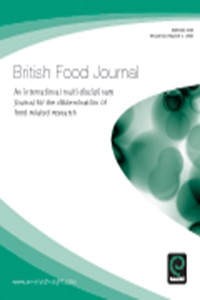Poor consumers’ preferences for nutritionally enhanced foods
Purpose
Micronutrient malnutrition is a public health problem in many developing countries, especially in the poorest population segments. Fortification and other food-based approaches, such as using more nutritious ingredients in processing, could help to address this problem, but little is known about poor consumers’ attitudes toward nutritionally enhanced foods. The purpose of this paper is to analyze whether poor consumers in Africa would purchase foods with more nutritious ingredients and the related willingness and ability to pay.
Design/methodology/approach
A survey and choice experiment were conducted with 600 randomly selected households in the poorest neighborhoods of Nairobi (Kenya) and Kampala (Uganda). Participants were asked to choose between various alternatives of porridge flour with different types of nutritional attributes. The data were analyzed with mixed logit models. Porridge flour is widely consumed among the urban poor, so that the example can also provide interesting broader lessons.
Findings
Poor consumers welcome foods that are micronutrient-fortified or include new types of nutritious ingredients. However, willingness to pay for nutritional attributes is small. New ingredients that are perceived to have little effect on taste and appearance are seen more positively than ingredients that may change food products more notably.
Practical implications
New nutritionally enhanced foods have good potential in markets for the poor, if they build on local consumption habits and are not associated with significant price increases.
Originality/value
This is among the first studies to explicitly analyze poor consumers’ preferences for nutritionally enhanced foods.

